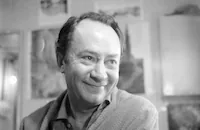I Thank a Fool

Brief Synopsis
Cast & Crew
Robert Stevens
Susan Hayward
Peter Finch
Diane Cilento
Cyril Cusack
Kieron Moore
Film Details
Technical Specs

Synopsis
After spending 2 years in prison for the mercy killing of her incurably ill lover, Canadian Dr. Christine Allison accepts employment with Stephen Dane, the prosecuting attorney at her trial. Dane explains that he wants her to look after his wife, Liane, who has been mentally unbalanced since she caused the death of her father in an automobile crash. Gradually, however, Christine begins to suspect that Dane has another reason for hiring her and is not really concerned about his wife's welfare. Her doubts increase when Liane's supposedly dead father, Captain Ferris, reappears. Determined now to help Liane, Christine takes her to her alleged lush country home in Ireland. The shock of having to admit that it is a hovel and that her father is a drunken schemer is too much for Liane, and she suffers a breakdown. On a doctor's advice, Christine gives her a sedative. When she finds Liane dead from an overdose, Christine fears that Dane arranged matters so that again she will be charged with mercy killing. But he defends her and traps Captain Ferris into admitting that he hid the empty bottle after Liane took all the pills it contained. After confessing complicity in the death of his daughter, Captain Ferris falls to his death.

Director
Robert Stevens
Cast

Susan Hayward

Peter Finch
Diane Cilento

Cyril Cusack

Kieron Moore
Athene Seyler

Richard Wattis
Miriam Karlin

Laurence Naismith
Clive Morton
J. G. Devlin
Richard Leech
Brenda De Banzie
Marguerite Brennan
Yolande Turner

Judith Furse
Grace Arnold

Peter Sallis
Joan Benham
Joan Hickson
Crew
Douglas Adamson
Chic Anstiss
Jim Atkinson
Bill Baldwin
Philip Barnikel
John Bigg
Davis Boulton
Joan Bridge
Chambers & Partners
Frank Clarke
Pamela Cornell
Gordon Daniel
Anatole De Grunwald
Ron Goodwin
Colin Grimes
Elizabeth Haffenden
Betty Harley
Irene Howard
Tom Howard
Joan Johnstone
L. Kelly
Sean Kenny
Sean Kenny
Michael Knight
Dora Lloyd
Jack Lowin
Ron Matthews
Charles Monet
Roy Parkinson
Derek Parr
Tony Sforzini
Dolly Smith
J. B. Smith
Basil Somner
Cyril Swern
David Tomblin
Alan Tomkins
Karl Tunberg
Ted Wallis
Tony Wallis
A. W. Watkins
Harry Waxman
T. Wilkie
Elizabeth Woodthorpe

Videos
Movie Clip



Trailer
Film Details
Technical Specs

Articles
I Thank a Fool

I Thank a Fool
Quotes
Trivia
Notes
Location scenes filmed in Liverpool and Crookhaven, Ireland. Opened in London in July 1962.

Miscellaneous Notes
Released in United States 1962
CinemaScope
Released in United States 1962














